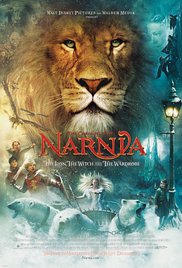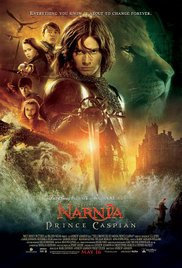C.S. Lewis never wanted to see a movie or television adaptation of his Narnia series of books, believing that no film could do them justice, and that "there are stories which are for the ear alone." Nonetheless, TV adapations were made, starting in the 1960s. But it wasn't until the advent of CGI that his estate gave approval for a cinematic adaptation. What resulted was nothing in the spirit of the author's books.
Lewis wrote the Narnia stories in the decade following the Second World War, for a target audience of children who had just survived the ordeal. That generation had grown up in the midst of world-shattering events, but cordoned off from them as much as possible by older generations - as were the Pevensey children, evacuated from London to the countryside. Narnia was a fantastic place where those sheltered kids might visit and live out their own adventures, of the imagination.
In those adventures, the children prevail against powerful and evil forces using the power of faith, courage and compassion. The stories promote virtuous behavior, and repentance and redemption when virtue fails. Though war and violence are part of the background, there is very little in the narrative. Instead, the focus is on the children's relationships with the strange denizens of Narnia, and how their basic decency and innocence ultimately exalts them as the saviors of the realm.
It would be difficult, one might imagine, to craft a film that was faithful to this spirit and was able to keep the interest of movie audiences addicted to PG-rated action violence. The film makers did not try - they created formulaic action-adventure movies loaded with CGI effects. In doing so, they added much material that is not in the books, particularly battle sequences, almost unheard of in Lewis's work.
For example, the climactic battle at the end of The Lion, the Witch and the Wardrobe is wholly the director's invention; in the book only the aftermath is described. The director freely and happily admits in an interview on the DVD extras that he created the scene based on how he imagined the battle must have been like when he read the book as a child. In Prince Caspian an entire castle assault sequence is introduced which is nowhere in the novel.
Some of the added material has more merit than others. The very first movie begins with a dramatic scene of an air raid against London and the Pevensey children rushing in terror to take shelter. This sets a somber tone for the beginning of the film and impresses the viewer with a sense of how overwhelmed the protagonists are by events in the real world. It makes sense to include this for modern audiences, so distant in time from the war compared to the first readers of the novels.
Another great bonus scene is the one in Prince Caspian in which we first meet Reepicheep - a clever and amusing fight with a band of Telmarine soldiers, and a much more fitting introduction for such a memorable character than the one simple sentence from the book.
In conclusion, the movie versions of the Narnia stories are reasonably entertaining action adventures in the modern style. But if you want to appreciate the chronicles as Lewis told them, you will need to go back to the books, and experience Narnia in your imagination.
|
|
||||
|
Director: Andrew Adamson (Generation X, born 1966) Starring: William Moseley (Millennial, born 1987), Anna Popplewell (Millennial, born 1988), Skandar Keynes (Millennial, born 1991), Georgie Henley (Millennial, born 1995) |
|||||

